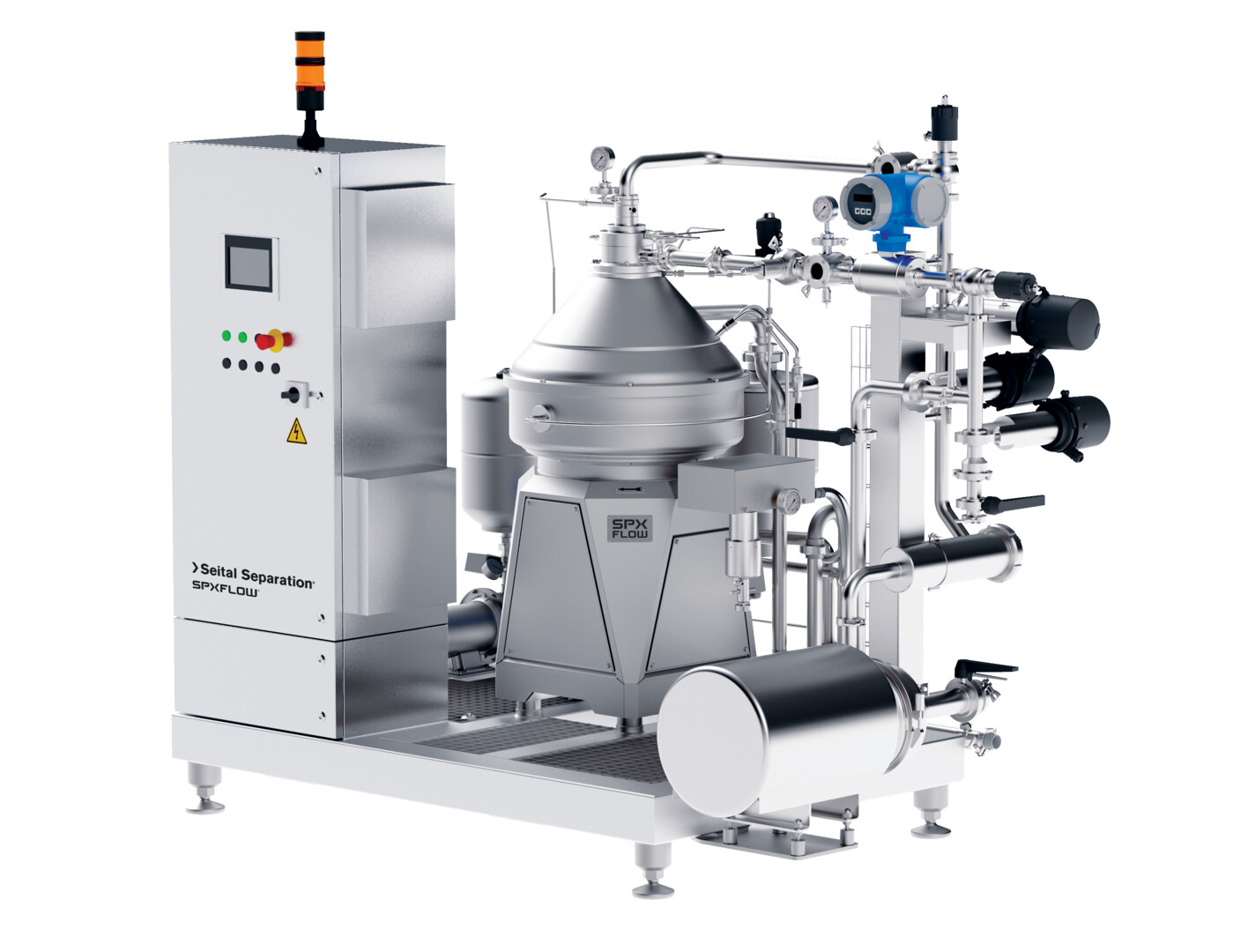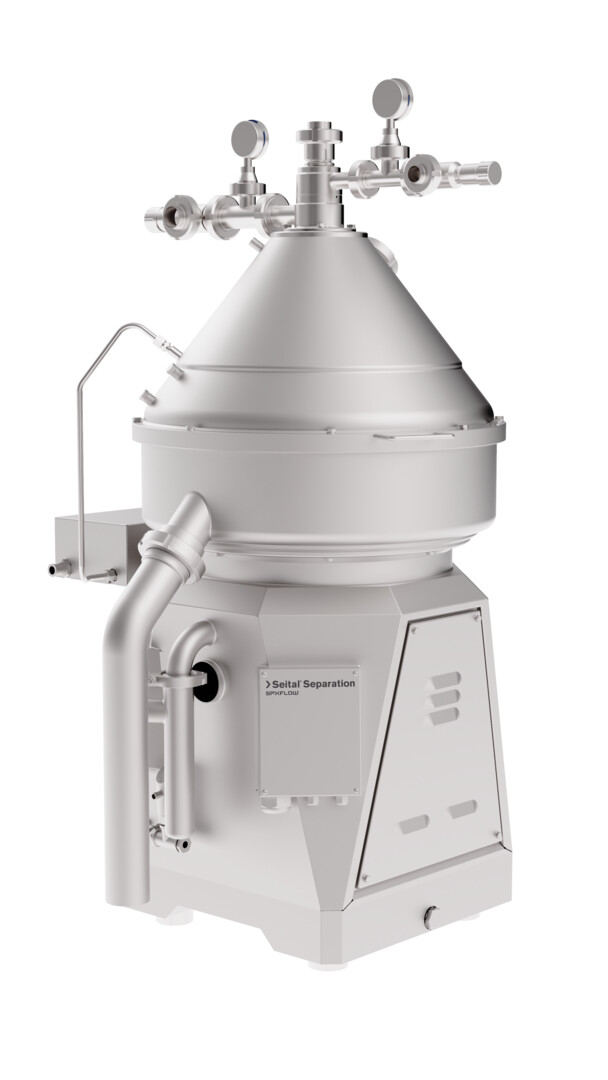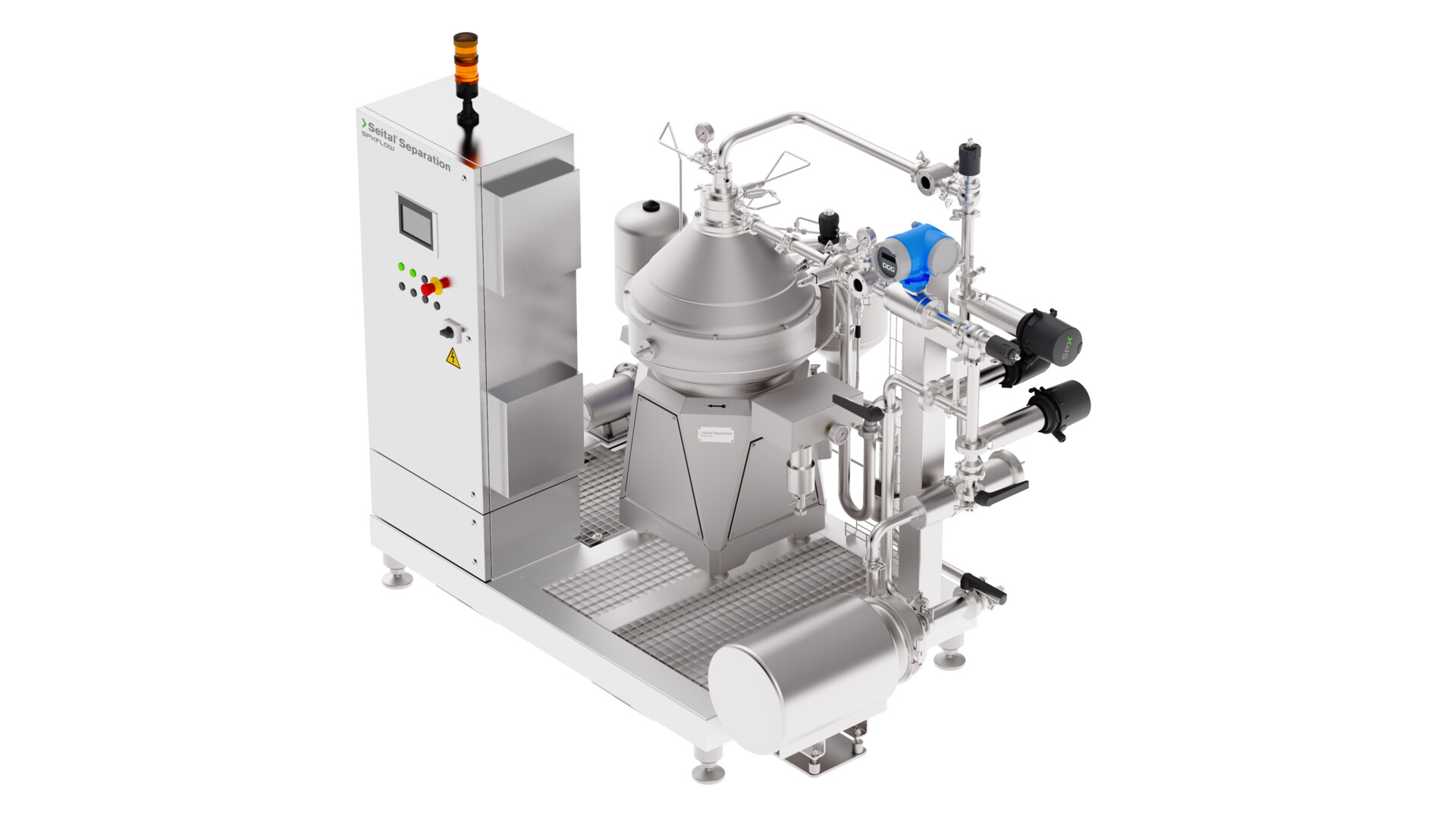Direct Drive Centrifuges
Solids-Retaining Separators for Liquid/Solid Separation
SPX FLOW Seital Separation offers a wide range of solids-retaining separators for liquid/liquid/solid separation with very low solids content in the feed (less than 0.2% in volume). This type of separator allows efficient separation of a mixture into its two phases and the recovery of fine particles (0.5–500 µm) by means of a very high peripheral centrifugal field (G-force).
High-Speed Bowl Separation Process
The separation process takes place in the bowl of the high-speed separator, ensuring precise phase separation and particle recovery.
Theory of Operation
In traditional separator designs, the motor and centrifuge shaft are discrete units that must be connected to transfer energy from the motor to the shaft. Traditionally, this connection is indirect, in that an intervening mechanism makes the connection. In one common approach, a system of gears translates the motion from the rotor to the shaft. Another approach uses a drive belt to transmit energy. While both geared and belt-driven systems are highly reliable, having so many moving parts contributes to loss of energy during transmission.
Direct drive systems accomplish the transmission with fewer parts as the motor shaft becomes the centrifuge shaft. The motor mounts directly beneath the bowl and its single shaft extends directly into the bowl. Driving the centrifuge directly from the motor minimizes energy lost in the process, enables more compact designs and reduces the maintenance that gear-or belt-driven systems might require otherwise.
Key Applications
- Dairy - direct drive equipment is suitable for all separation of raw milk into skim milk and cream applications at all temperatures as well as for bacterial clarification. Because these applications tend to operate and high volumes for extended periods, energy savings go directly to the bottom-line.
- Beverage – direct drive centrifuges can reduce energy consumption and maintenance costs in many beverage separation applications such as wine, tea, and coconut water.
- Brewing – as with traditional separators, brewers would choose direct-drive separators to remove residual yeast and other non-soluble solids that might impact flavor and aroma. Plus, for those whose process line is customer-facing the compactness of the direct system contributes to sleeker plant designs.
- Oils - processing of edible oils, essential oils and vegetable oils often have long production runs and limited installation space therefore could benefit from the compact and en






